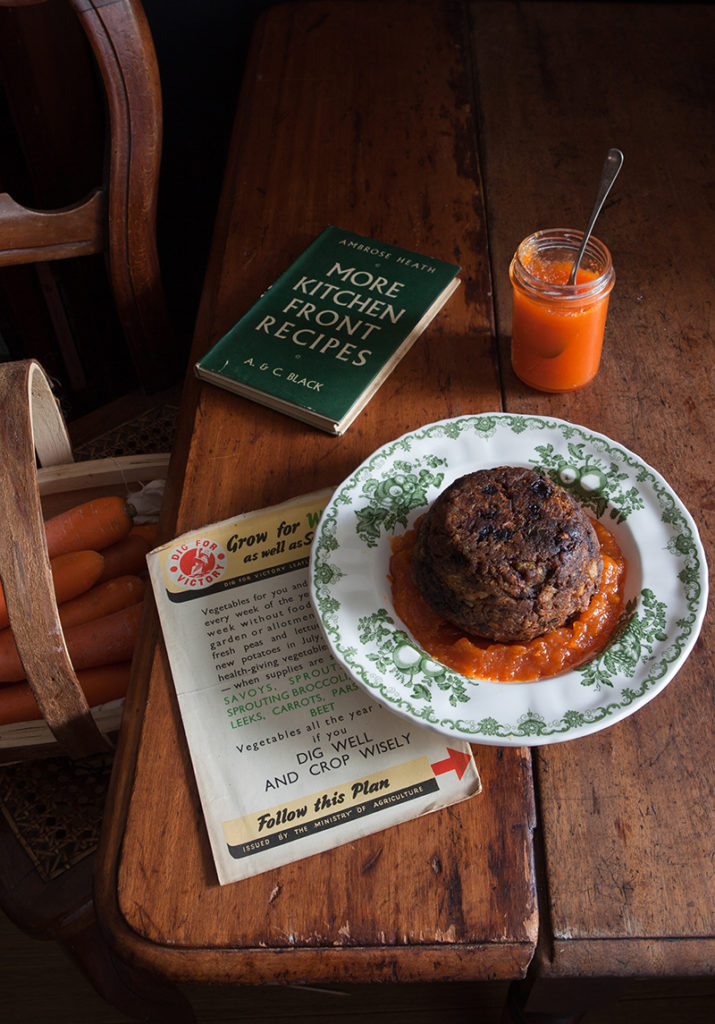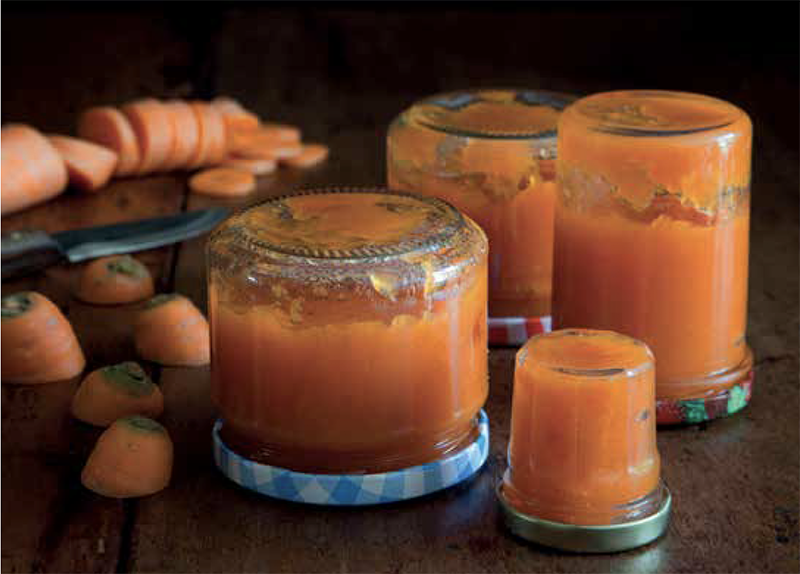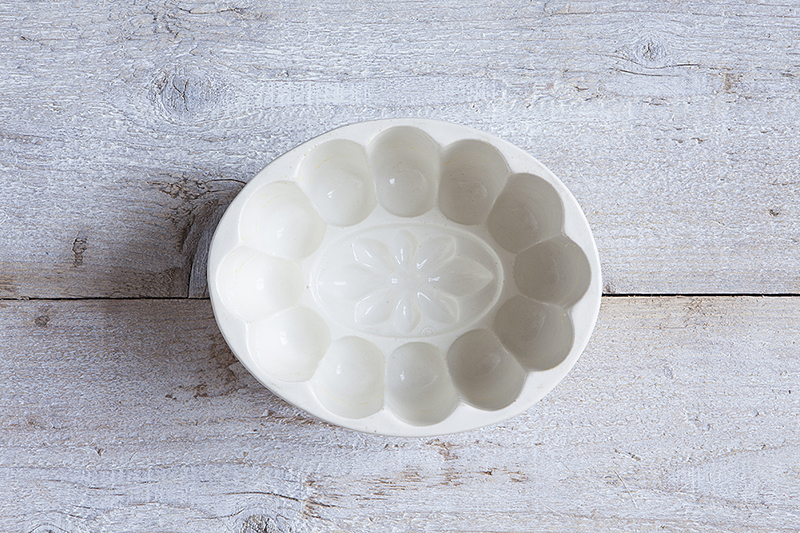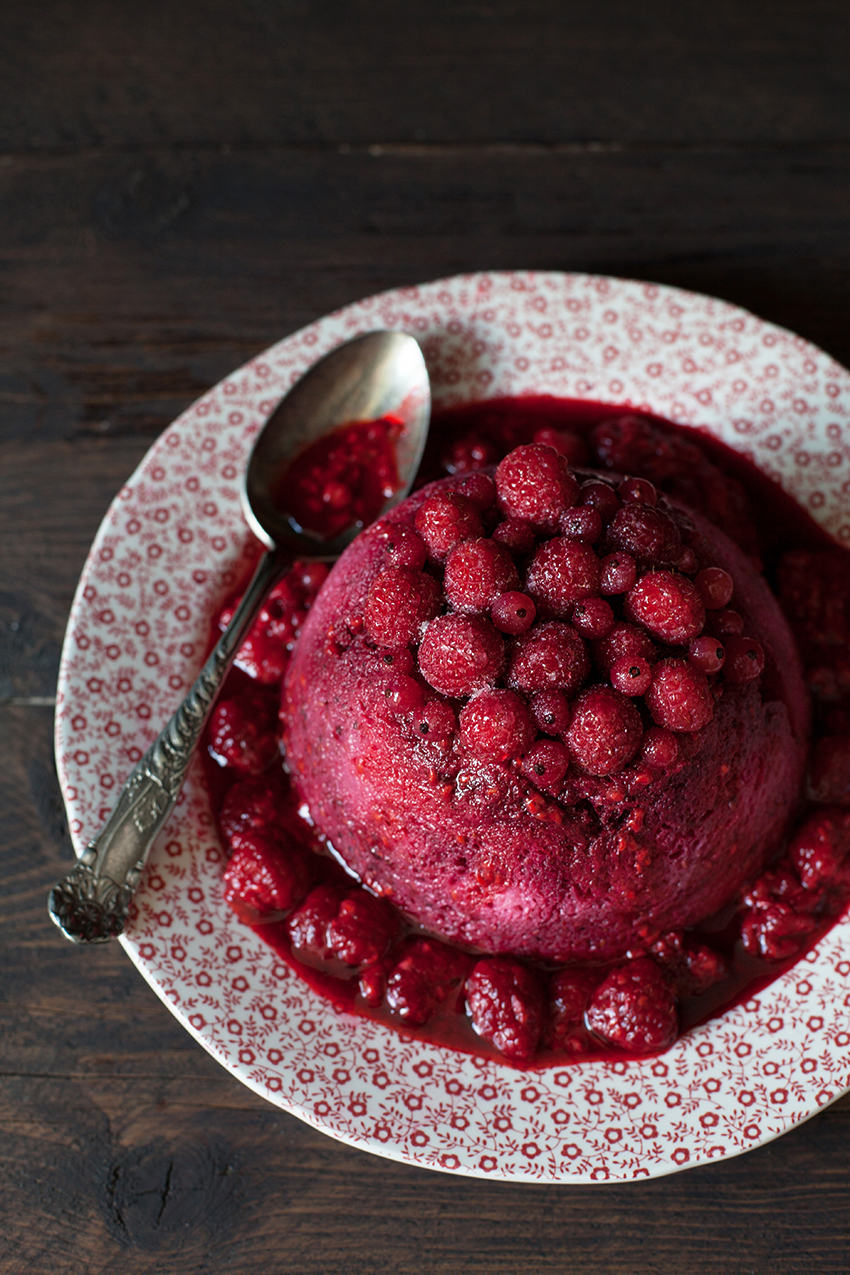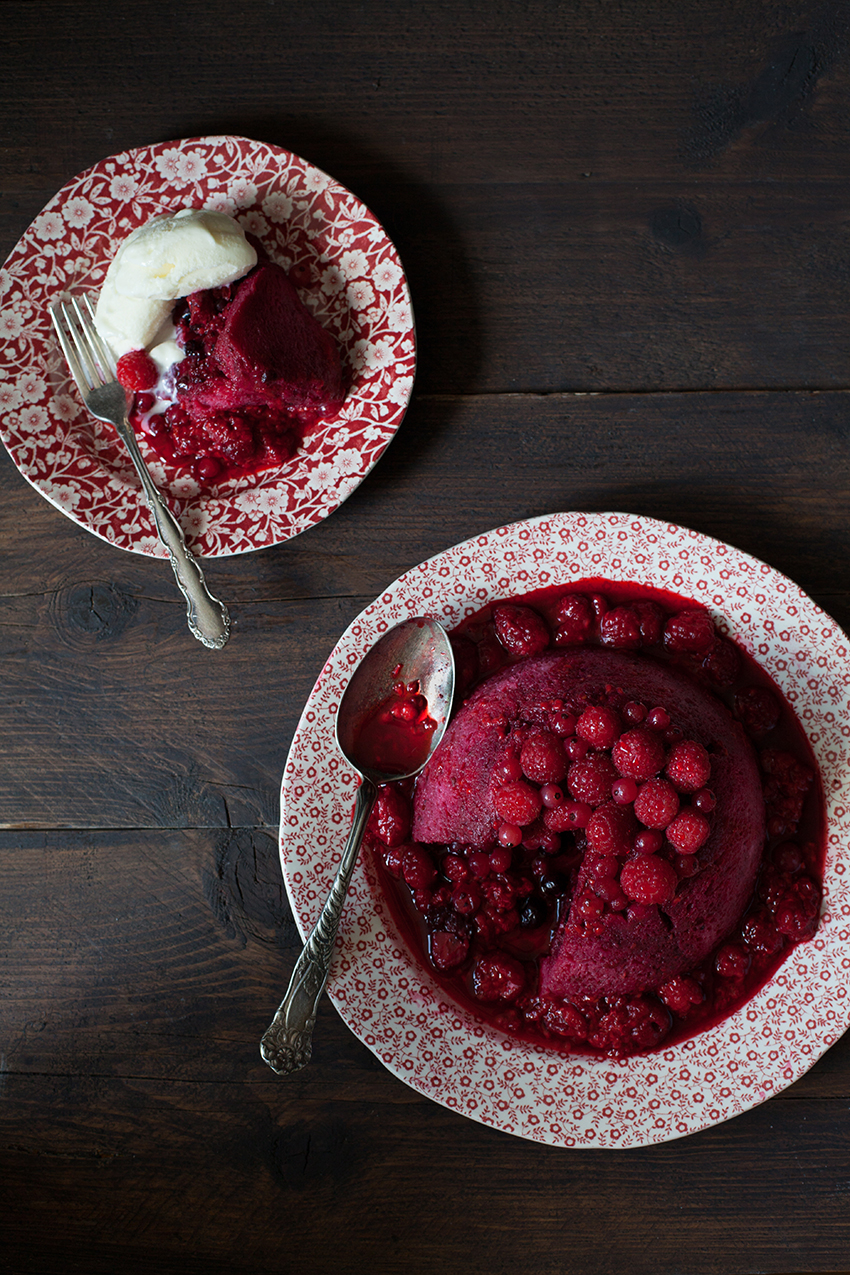The post War & Peace Pudding with Mock Apricot Jam – for the 75th anniversary of ‘Victory in Europe Day’ A Recipe from Pride and Pudding appeared first on Miss Foodwise.
]]>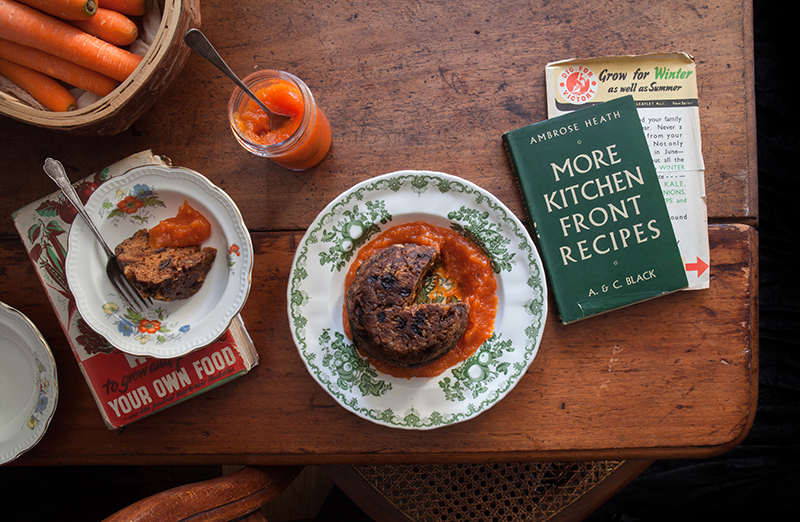
Today 8 may I’ll be showing two war-time recipes over at London’s Borough Market for the 75th anniversary of ‘Victory in Europe Day’ or the end of WWII.
While world wars and lockdown are very different, both have led to difficulties obtaining certain ingredients. We’ll be looking at two war-time recipes that were actually promoted by the Ministry of Food because there was an overload of carrots and potatoes. Recipe booklets were made to help cooks to whip up a variety of recipes with carrots and potatoes and other austere but often very delicious creative recipes
We’ll be cooking up “War & Peace Pudding” with “Mock apricot” carrot jam, both wartime recipes from my book Pride and Pudding. Tune into our IGTV over at Borough Market on Instagram
During wartime, ingredients for plum pudding were hard to come by so the Ministry of Food produced a recipe for a ‘War and Peace Pudding’ made of carrots, potatoes and suet.
The recipe also appeared as a ‘Wartime Christmas Pudding’. Carrots and potato were both promoted by the Ministry of Food because they grew easily and were plentiful, and therefore they were important to keep people healthy. Potato was often used as an alternative to other ingredients in dishes and carrots were used because of their sweet flavour. At some point ‘carrots on sticks’ were sold to children instead of ice cream – which was banned – and ‘toffee carrots’ replaced toffee apples.
This is an excellent pudding and the “mock apricot” carrot jam absolutely sublime and a great novelty for when dinner parties are back allowed!
War & Peace Pudding
Makes 1 pudding in a 14 cm (No. 42) diameter basin (mould)
75 g carrots, grated
100 g potatoes, grated
85 g plain (all-purpose) flour
30 g fresh breadcrumbs
30 g shredded suet
1 teaspoon ground allspice
or mixed spice
1 teaspoon bicarbonate
of soda (baking soda)
2 tablespoons warm water
1 tablespoon mixed dried
fruit, soaked in water, rum or brandy
Method
Preheat the oven to 160C. Prepare the pudding basins for steaming
In a large bowl, combine the carrot, potato, flour, breadcrumbs, suet and allspice. Dissolve the bicarbonate of soda in the water and add to the mixture. On a lightly floured work surface, knead into a ball. Don’t be alarmed if the mixture seems dry, it will come together after kneading it for a few minutes.
Work through the mixed dried fruit and roll the dough into a ball. Put the ball into the prepared pudding basin and push it down. Close the pudding basin off with baking paper and wrap in tin foil. Place on an inverted saucer in a pot large enough for the pudding basin and pour in boiling water to come up halfway the sides of the basin. Close the lid, cover any steaming holes the lid might have and steam for 2 hours.
Serve with carrot jam
“Mock apricot” Carrot jam
500 g carrot puree made from boiled carrots
500 g raw sugar
juice of 1 lemon
zest of 1/2 lemon, grated or cut into fine strips
5 apricot kernels
2 tablespoons brandy
Put the carrot puree in a large saucepan and bring to the boil. Add the sugar, lemon juice and zest and apricot kernels.
Boil until the mixture has thickened and gels quickly when spooned onto a cold plate.
Remove from the heat and take out the apricot kernels if you can spot them. Stir the brandy through the jam and decant into sterilised jars. Close the jars and turn them upside down to cool.
The jam has a hint of apricot; it was marketed as mock apricot jam.
This jam doesn’t keep long and must be stored in the fridge.
The post War & Peace Pudding with Mock Apricot Jam – for the 75th anniversary of ‘Victory in Europe Day’ A Recipe from Pride and Pudding appeared first on Miss Foodwise.
]]>The post Jaune Mange appeared first on Miss Foodwise.
]]>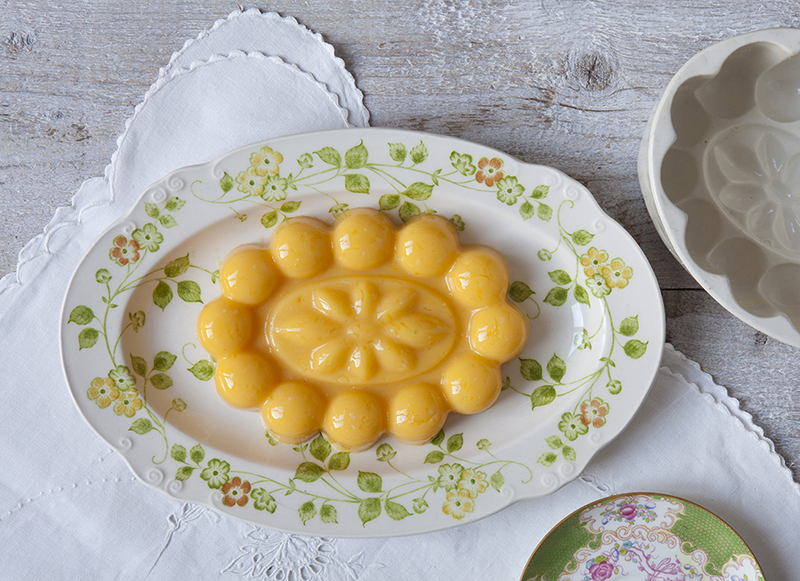 Jaune Mange jelly is the yellow sister to the ancient delicacy called Blanc Mange which means ‘white food’. It is one of the most international early dishes of European cuisine. From the Middle Ages onwards the name of this dish in its various forms – blanc mange, blanc manger, blamange, manjar branco, biancomangiare – can be found in most European cookery books.
Jaune Mange jelly is the yellow sister to the ancient delicacy called Blanc Mange which means ‘white food’. It is one of the most international early dishes of European cuisine. From the Middle Ages onwards the name of this dish in its various forms – blanc mange, blanc manger, blamange, manjar branco, biancomangiare – can be found in most European cookery books.
It is believed by many food historians that the earliest recipe for blancmange dates back to the twelfth century. Two recipes for blancmange also feature in the earliest English cookery text, The Forme of Cury from C1390. By 1395, two recipes for blancmange can be found in the Viandier manuscripts, the first French cookbook: one is a dish for the sick, the other is a multicoloured dish, which is at odds with the name’s literal meaning.
This recipe uses seville orange juice, while others recommend lemon and lemon peel for flavour and colour. Later recipes by J.H. Walsh in The British Cookery Book (1864) instruct the cook to use sherry or ‘raisin-wine’. Because the eggs give this jaune mange a set already, you don’t need to use as much gelatine as you would for a blancmange.`
Jaune Mange
Boil one ounce of isinglass three quarters of a pint of water, till melted, strain it; add the juice of two Seville oranges, a quarter of a pint of white wine, the yolks of four eggs, beaten and strained, sugar to the taste; stir it over a gentle fire till it just boils up; when cold put it into a mould or moulds; if there should be any sediment, take care not to pour it in.
Charlotte Mason, The Lady’s Assistant, 1773
Makes enough for a fancy 400 ml (14 fl oz) mould
What do you need
- 220 ml (7. fl oz) white wine
- 1 teaspoon sugar
- 3 egg yolks
- 4 gelatine leaves
- juice of 2 seville oranges (or plain oranges, it will just be more sweet but not too sweet, don’t worry)
Method
In a small saucepan, bring the wine and sugar to a simmer. In a separate bowl, whisk the egg yolks. Soak the gelatine leaves in the orange juice until soft.
Begin whisking the warm wine mixture into the egg yolks, followed by the soaked gelatine and juice.
Allow to cool but not set, then pour into a mould that you have rinsed and not wiped dry and allow to set for 6 hours or overnight. The smaller the mould, the shorter the setting time.
To unmould, wet one of your hands and use it to loosen the jelly. Allow the jelly to slide out onto a wet plate (if the plate is wet, you can easily move the jelly around if necessary).
From my book ‘Pride and Pudding – the history of British puddings, savoury and sweet’ (Murdoch Books)
Happy new year!
The post Jaune Mange appeared first on Miss Foodwise.
]]>The post Summer Pudding appeared first on Miss Foodwise.
]]>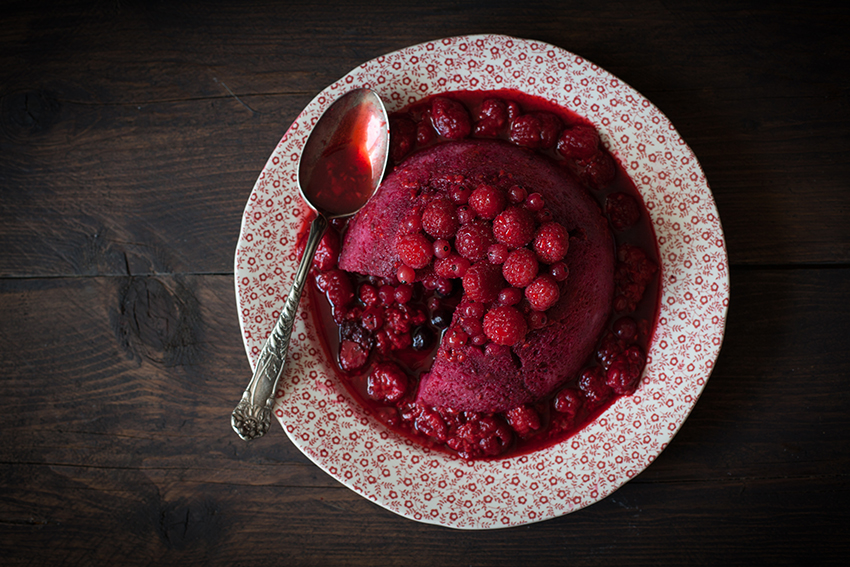
There’s a lot going on in life but I wanted to share this recipe with you because I find when things get too busy or too complicated, an easy yet satisfying pudding can work like a drink of ice cold water on a scorching hot day. What also prompted me was something my friend Sarah (you might remember her from the pies she made for my launch) showed me online, a link to the making of a summer pudding which created outrage and disgust in the comments section. Foreigners (non-Brits) didn’t understand why you would eat soggy bread with fruit, and the video that came with it made even my stomach turn…
But the fact is that Summer Pudding is one of life’s great things. Bread soaked in fruit juice takes me right back to my childhood. I was a very picky eater but you could always feed me bread topped with mashed up strawberries, the deep red juices seeping into the bread making it hard to get it to your mouth in one piece. It was messy eating but really the only thing I enjoyed to eat.
But what is this heavenly thing you ask if you aren’t British or a pudding nut like I am?
A summer pudding is a delightfully light pudding which is made by lining a pudding basin or charlotte mould with stale white bread slices, then filling it up with lightly stewed summer fruits and topping it off with a juice-soaked bread lid. I always enjoy unmoulding this pudding, to see how the white slices of bread have been tinted by the deep crimson juice. It looks like a fresh red wine stain on a crisp white tablecloth. When ready to indulge, serve with cream, or ice cream, whichever you prefer.
As you can read in my book ‘Pride and Pudding‘ this pudding was also known as a ‘hydropathic pudding’ and all the rage in the health spas of the nineteenth century. Its light bread casing instead of pastry or a suet crust (which was usually the case with real pudding) made it the perfect treat for the health-conscious ladies of that era.
The most important factor in making this pudding excellent is to use the best-quality white bread you can get your hands on. Cheap bread full of unnecessary additives will turn slimy and your pudding will certainly collapse. When the best products are used, the outcome is always outstanding. A few months ago when I was in Tuscany to host our ‘Creative Gathering‘ workshop I discovered that Tuscan unsalted bread is actually the very best for Summer Pudding, only it comes in smaller loaves (unless if you bake it into a large tin loaf) so you will have to do some patchwork. I made one for my friend Giulia’s Fettunta party and the Italians all approved.
Any kind of summer fruit should do for the filling: raspberries and redcurrants are traditional, blackberries can mix it up a little, but strawberries should be avoided as they do not remain pleasant enough to enjoy after a couple of hours or a night of soaking. I know, I told you before it reminded me of strawberry sandwiches, but those you eat after seconds of mashing the fruit, this pudding needs to rest at least for a few hours but ideally overnight.
A small news I want to share with you if you are in Belgium
From 30 august you will be able to see Bake Off Vlaanderen on VIER, as you might already know I am one of the judges. The program will be as beautiful as the Great British Bake Off, I promise you this! 30 August 20:30 VIER. Follow the conversation on social media with the hashtag #BakeOffVL
Makes enough for a 17 cm diameter pudding basin; you could also use a rectangular cake pan (though I do not like the shape) or a charlotte mould
What you need
- 650 g raspberries
- 150 g blackberries
- 100 g redcurrants, or blueberries or frozen mixed berries
- 50 g (1¾ oz) sugar
- a loaf of plain white bread
Lightly grease the pudding basin and line with plastic wrap so the pud will be easier to remove when soaked all the way through.
Toss all the berries into a saucepan and heat gently with the sugar to get the crimson juices running, no longer than 2–3 minutes. When using frozen berries, which is fine and far more economical, do the same, but it will need a little longer to stew. Let the berries cool in the pan.
Cut a round out of a slice of your bread to fit the bottom of the basin. Now cut the rest of the bread in 1 cm (3/8 inch) thick slices—about 6 slices or as many as you need—and trim them into a slight trapezium shape to fit the sloping edges of the bowl. If your bowl is straight or you are using a cake pan
or charlotte mould, you don’t need to fuss with cutting shapes, just remove the crusts. On this occasion you really do need to remove the crusts.
Line the basin or mould with the bread, making sure there are no gaps, so the filling will stay in. Now spoon the cooled berries into the bread-lined basin, reserving as much of the juice in the saucepan as you can manage.
Cover the pudding with another slice or slices of bread and pour over some of the reserved juice so the bottom is nicely covered, nothing more. Reserve the remaining juice for serving.
Place a plate or a lid on the pudding and put a weight on top of it. A tin of tomatoes is what I use.
Refrigerate overnight so the bread can soak up the juices nicely.
When ready to serve, open the plastic wrap, place a plate on
top of the basin or mould and invert.
Pour over the reserved juice and serve with vanilla ice cream, or just as it is.
The post Summer Pudding appeared first on Miss Foodwise.
]]>